Mystery 'asparagus' agave flowers in Cambridge after 57 years
- Published
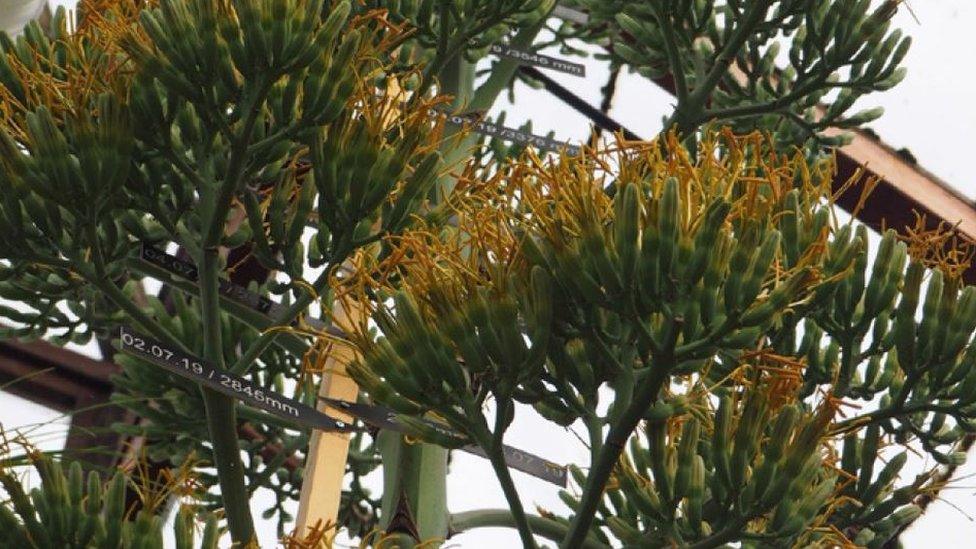
Once it started to grow, the plant took more than two months to flower
A giant plant dubbed an "asparagus on steroids" has flowered for the first - and only - time after keeping gardeners waiting for more than half a century.
The agave flower spike appeared in June at Cambridge University Botanic Garden and grew to 4.5m (14.5ft), almost hitting the glasshouse roof.
Staff were not sure of the species, but believed it was an Agave vivipara.
They said the long-awaited flowers, which smell like broccoli, were "not as pretty as people might expect".
Staff had been tending the agave, part of a family of plants from which tequila is made, since 1962 but could not confirm its species until it flowered.
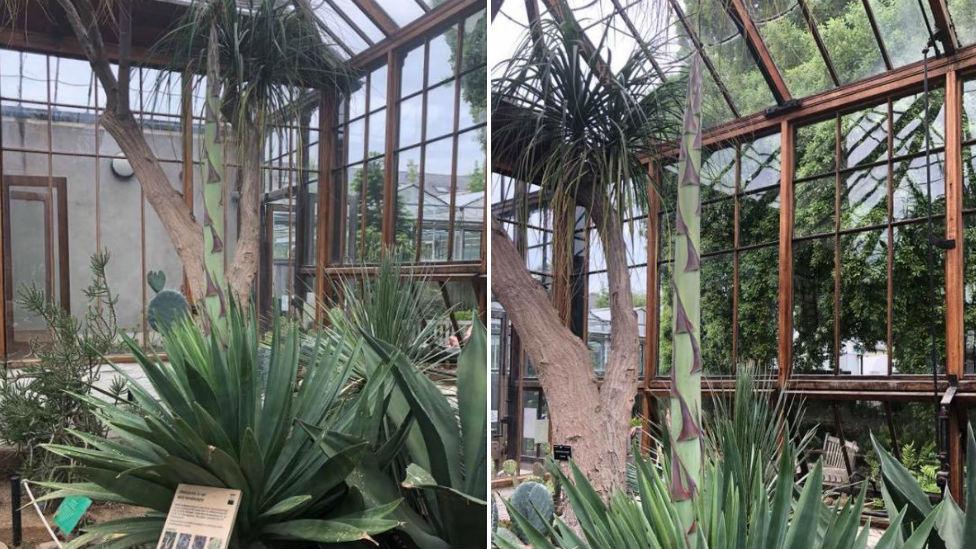
The central flower spike appeared in June and grew rapidly
When the succulent, which resembles a giant asparagus spear, began to grow "at an impressive rate" of about 10cm (7.5in) a day, staff thought it was likely to shoot through the roof of the glasshouse - and were prepared to remove panes to make room for it.
They also believed its flowers would show within a couple of weeks.
However, the agave had other ideas, stopping just shy of the 5m (16.4ft) ceiling, and refusing to bloom until Monday night.
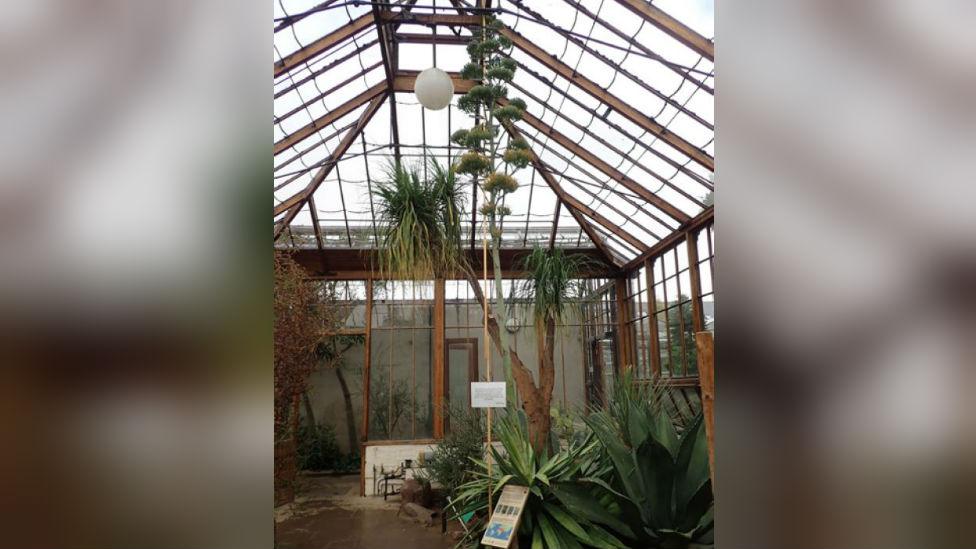
The spike stopped just short of the glasshouse roof - and finally bloomed
Assistant curator Dr Ángela Cano has identified it as Agave vivipara, though this will not be properly confirmed until it produces fruits.
"Its flowers may not look as pretty as people might expect as there aren't any coloured petals," she said.
"In the wild, pollinators are attracted by the massive inflorescence (flower structure), the yellow colour of the stamens, the smell of the flowers - broccoli-like - and the abundant nectar they produce."
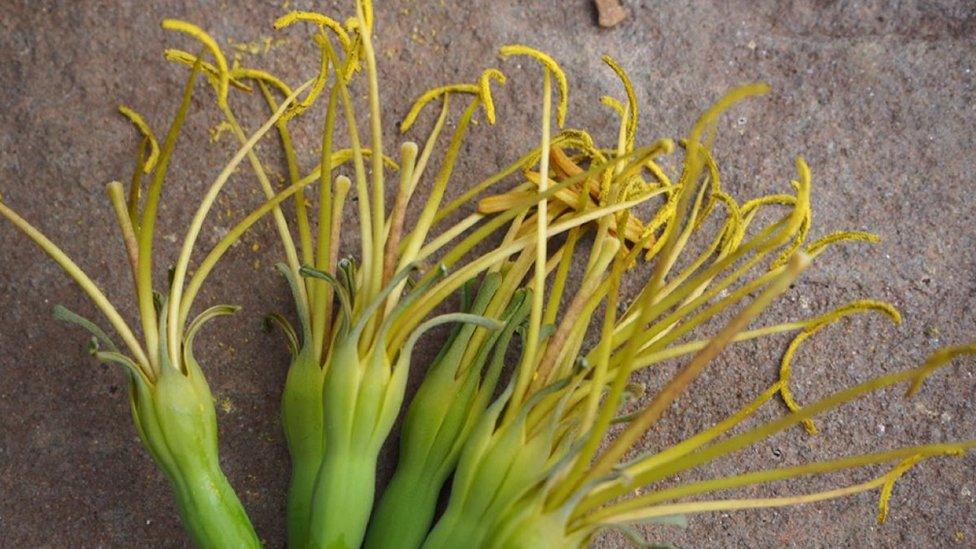
The species agave comes from the desert regions of Mexico
Agaves are generally referred to as "century plants" as they can take up to 100 years to flower, she explained.
As a result, "this is a rare sight in cultivation", combined with the fact they are not commonly grown in gardens.
Agaves are monocarpic, which means they only flower once, set seed and then die.
Staff believe it will remain in bloom for about a month before dying.
- Published7 July 2019
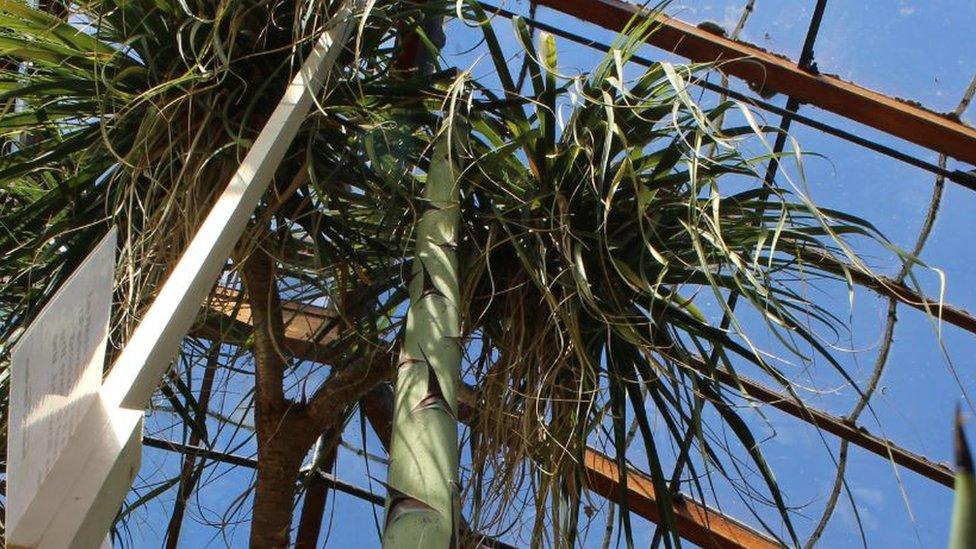
- Published8 August 2017

- Published27 June 2017
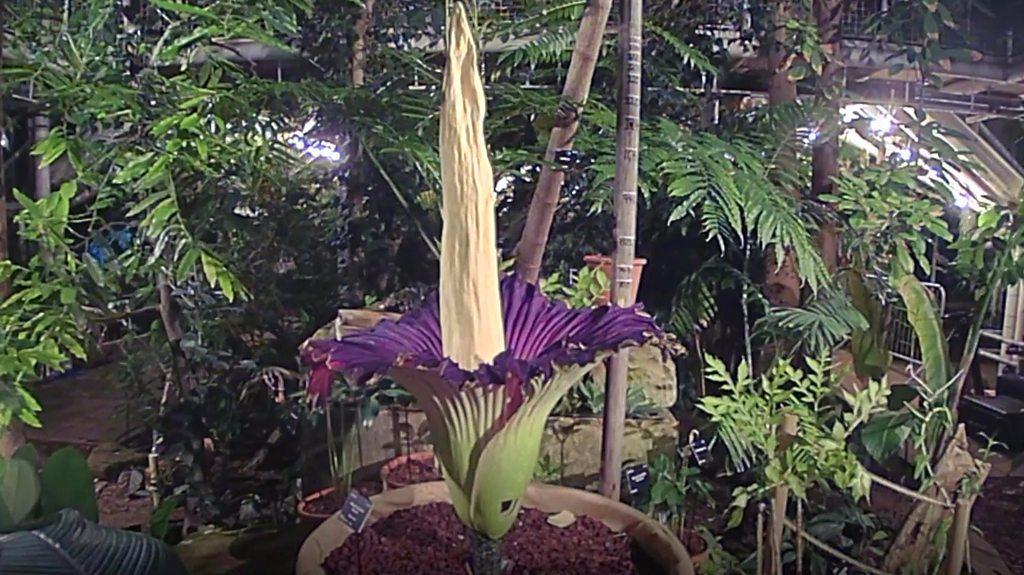
- Published26 June 2017
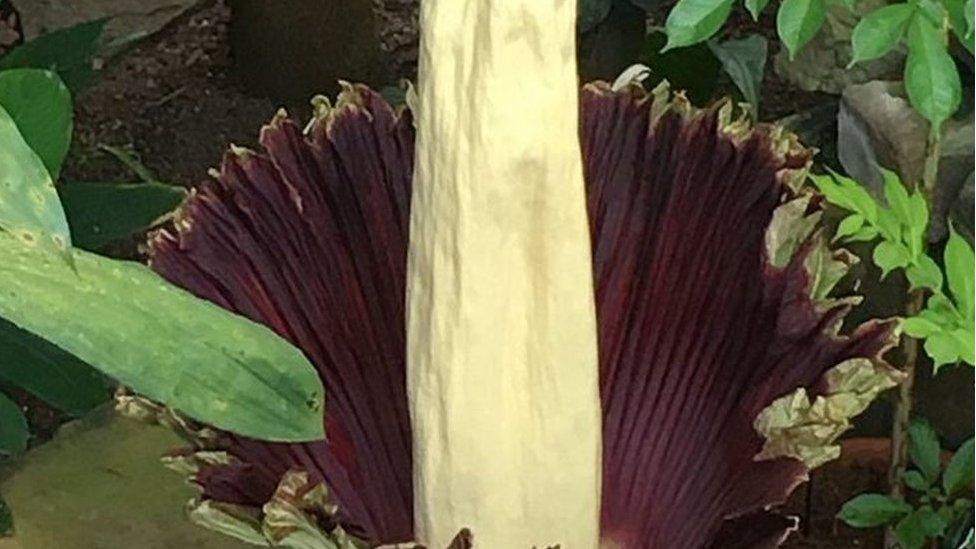
- Published25 May 2010